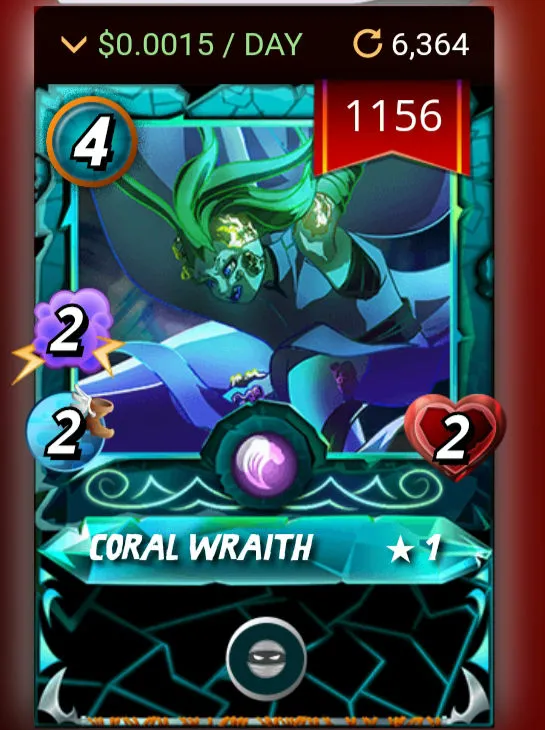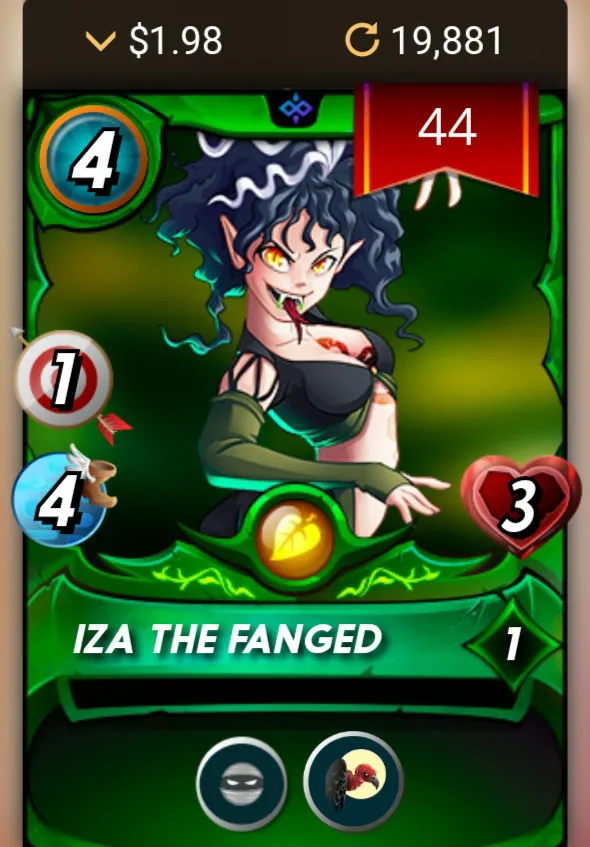
Edited in Canva Pro.
𝕴𝖓𝖙𝖗𝖔𝖉𝖚𝖈𝖙𝖎𝖔𝖓
This is the second part of my Splinterlands Hidden Mechanics Series discussing some important (and not so important) mechanics and tips in Splinterlands.
If you haven't checked it yet, you can click on this link or just search, "Splinterlands Hidden Mechanics" in my account.
The part 1 includes a short intro to monster stats and the hidden mechanics about health and armor.
For this part, I'm going to discuss about different damage types and why you can and cannot attack at certain situations, as well as speed and how it affects you and the monsters in the battle.

DAMAGE TYPES
There are 3 different damage types in the game but I'll discuss 5 of them to be more specific.
As to why I will discuss 5 when there's only 3 damage types, you might need to stick around to find out.

MELEE DAMAGE TYPE
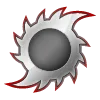
Melee monsters can only attack while on first position targetting the opponent's monster that is also in the first position. A melee monster that is not in the first position cannot attack unless that monster have abilities that allow them to change their targetting habits like Sneak, Opportunity, or Reach.
I call these abilities as, "Target Modifiers." They alter the attack mechanics of the monster that has it allowing it not to only attack from other positions but also prioritize attack target based on the ability's effect.

Other than target modifying abilities, there are also rules of combat that changes the attack mechanics. As an example, Melee Mayhem allows any melee monsters to attack from any position targetting the opponent's monster in first position. Think of it as having the Reach ability but extend it up to the last position instead of just the second.
Melee Hidden Mechanics: Super Sneak is a rule of combat that gives ALL monsters on the board, Sneak ability, that changes the priority target to the last position monster on the opposite side.
While the rule gives Sneak ability to ALL monsters, including range and magic, only melee monsters gain the Sneak effect of this rule of combat. However, not all Sneak monsters are melee. Coral Wraith is a Sneak monster from the Water Splinter with magic damage type. Iza the Fanged is a range Sneak monster from the Earth Splinter. Both works the same with Sneak.

RANGE DAMAGE TYPE

Range attacks can be used from any position. Melee and range attacks uses hit/evade mechanics, which means they can miss. As for the factors, I'll discuss more in detail on the Speed Section.
Range Hidden Mechanics: Range monsters cannot attack while in first position unless the range monster has Close Range ability.
The main advantage of using range monsters are more range monsters have decent to high speed even at lower levels. This means that they can attack earlier than most, which allows you to eliminate the opponent's monsters even before they can act.

MAGIC DAMAGE TYPE

Magic Damage is a combination of melee and range in terms of targetting mechanics. They can attack from any position even while in first or last. One common disadvantage of magic type monsters are they have low health and speed. Unless you have other defensive abilities such as Protect, these monsters will melt like butter once your main tank dies.
Magic Hidden Mechanics: Magic damage bypasses through armor and can never miss. These can be altered though by abilities such as Void Armor, that allows the monster to block magic attack with their armor, or Phase ability, that allows the magic attack to miss on the target, and rules of combat such as Weak Magic that works similar to Void Armor.
The next two are not terms found in the game. You can say that I invented them, in order to make things easier to understand.

NONE or PASSIVE DAMAGE TYPE
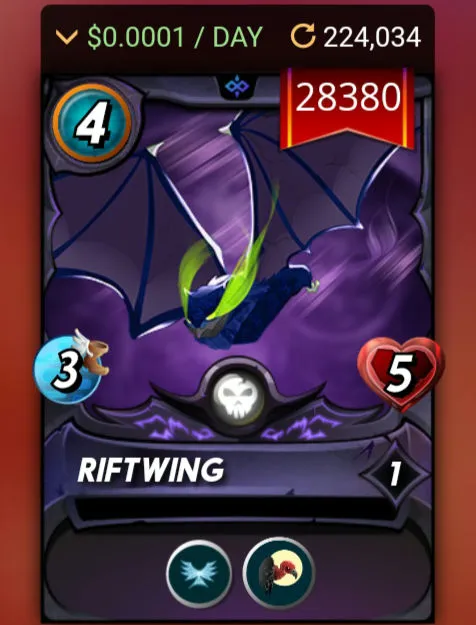
There are monsters that have no attacks. Icall these as Passive monsters. They aren't useless by any means, rather most of them have high health or good abilities for their mana cost, and are good to be used as tanks.
This is not a hidden mechanic but rather, a tip. If you can't find a good tank on Briar Patch rule of combat or the rule that gives everyone the Thorns ability, you can use a passive monster. Since they cannot attack, it won't be affected by thorns. Moreover, it gains the Thorns ability to inflict damage against opposing melee monsters. Use this strategy in combination with range and magic to gain advantage on the said rule of combat.

TRUE DAMAGE TYPE
Like the passive damage type, this is a term I like using and int cannot be found in the game. There's also no indicators to it that is different than other types.
These damage passes through armor and cannot be reduced by other abilities. That's why I call them, "True Damage." just like how it is called in other games I've played before where the damage cannot be reduced by resistances.
The poison can be removed by dying and getting resurrected or Cleanse ability but cannot be reduced by Shield, Void or other damage reduction abilities. However, you can avoid getting poisoned altogether by using Immunity Ability.
However, I am not sure if the Redemption ability can be negated by Immunity as I never experienced that first hand.
Fatigue is a game mechanic which inflicts increasing damage to all monsters starting Round 21. At Round 21, everyone gets 1 Fatigue damage. At Round 22, everyone gets 2 Fatigue damage and so on. This damage cannot be reduced or negated by any abilities.
Here's an example of one of my battles with Fatigue damage accumulating starting Round 21: https://splinterlands.com?p=battle&id=sl_86c723dc5950b2084a4fcd11a4504a1f

SPEED

Speed is important because of 2 factors:
- It is used to calculate hit/miss mechanics.
- It is used to calculate turn order.


TURN ORDER
This one's pretty straightforward. The higher the speed, the earlier the monster can act.
Unfortunately, I don't know the calculations on which monsters act first when they have the same speed. As I see it, there's no pattern as if it's random and simply by luck.

HIT/MISS MECHANICS
The hidden part is the calculations.
There is a formula that determines the hit/miss chance between two monsters and it's not as complicated as it sounds. I'm going to borrow some parts from my post, Share Your Battle:Conqueror Jacek x Coreaul Lurker.
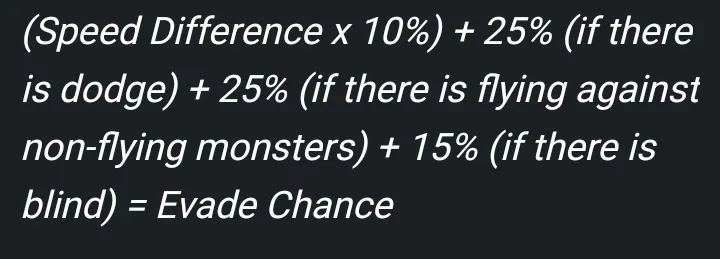
As I stated in my previous post, I don't like the hit/miss mechanics because it's more chance based than stats based. By this, I mean that when I had a monster with 95% evasion rate and got hit by an attack twice in a row, it's not even a coincidence but a miracle.
While we can argue that it's not impossible, the likelihood of that happening is extremely low. In 200 attacks, it can only happen 10 times and it happened in that 1 game that I "tried" using Coeurl Lurker. As I said, a miracle.
Therefore, while having high speed is a good strategy, I don't like using it nor would I recommend others to do it as it isn't as reliable as it should be based on my experiences.
I had other games that are quite similar to this and yes, it's not good to rely on Speed as your strategy for tanking.

I hope that the readers of my posts will like this one. I had a friend whom I've asked to try a game or two using my account and she was extremely confused as to why some monsters attack and some do not. This was my inspiration for this series.
The third part would be about card rarity, mana cost and card level. I will make the fourth and last part about the abilities. I was planning to add only a few abilities if the third part went short but I decided to make the whole abilities list from A to Z.
All of these and future related posts will be pinned in my profile for easier viewing and navigation after part 4 is out.


- This post is an entry for Splinterland's Social Media Contest.
- Other sources that I do not own are cited under their respective photos. Photos and drawings without cited sources are mine and made for this post.
- Animated Banners and Dividers are edited in Canva Pro.
- Some of the fonts used are from instafonts.io
If you're interested in playing the game, support me by registering using my referral link here

Have a nice day!

